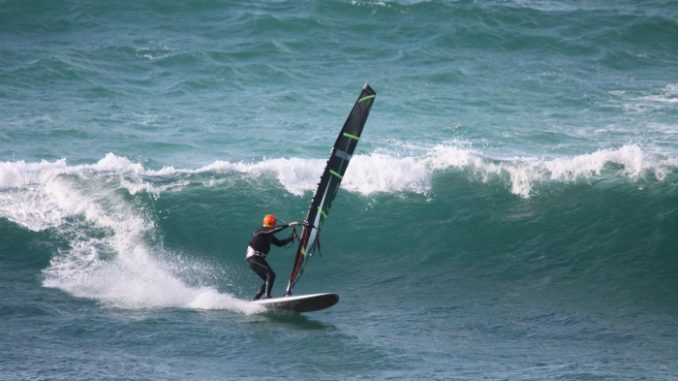
Text: Windsurfing UK
Pics: Paul Monnington, Keith Thomas
It used to be if the wind didn’t blow, then you couldn’t go – especially when it comes to wave sailing. The fact is, these days there are plenty of opportunities to still get out and play in the surf, even with marginal breeze on the cards.
Windsurfers have a lot to thank our stand up paddle boarding brethren for. Many of the main brands manufacture boards with the option of attaching a windy rig. In fact, most of these companies produce both forms of kit so it should come as no surprise that there’s synergy. And it’s not just bigger all round recreational cruising SUPs that offer windsurfing possibilities. The higher performance wave end of the spectrum allow the same option, which brings us back to waves.
For a good many lining up full power blow with swell is tricky – after all, there are two elements in the mix here. With just puff needed it’s not so much of an issue but when you’re searching for groomed corduroy it can be a whole new headache. With the addition of a windSUP to your toy box, however, scoring a decent session and not being skunked is more doable.
The kit
So what type of kit will you need? Well, fortunately all your usual wave sails can be used for light wind wave riding windSUP style. For the uninitiated there’s a perception you need additional rigs, which isn’t true. Usually 4.2m up to 5.3m (ish) will suffice.
The main thing to realise is you’re not trying to plane here. While some SUPs do release and get up to speed wave sailing windSUP is mostly a displacement activity where you’re moving much slower (until on a wave that is) which is part of the beauty – especially for newbies.
A stand up paddle board with a mast insert is the main additional piece of kit you’ll require. Chances are you can be using your SUP for paddling as well as windSUP thereby cutting down the cost. If you’re in the market for a SUP to paddle, and windsurf as well, look for one you can connect a rig to – even if windSUP isn’t your number one priority. And don’t think you’ll need to aim for super small surf sticks, this isn’t the case. A standard all round SUP (9ft-10ft) will do just fine.
The only thing to change is the board’s fins. For those using a SUP at the larger end of the scale you’ll probably have been supplied with larger skegs than you’ll need for wave windSUP. Slightly smaller fins in this case will help with manoeuvrability on the wave face. There’s no need to go super extreme, however.
Conditions
In terms of wind you’ll be surprised how little is actually needed for wave sailing windSUP action – 10 knots should be sufficient (sometimes less). The only thing to consider is there actually needing to be something – certainly enough to help drive you through the white water and propel you onto a wave.
As far as wave size goes this is down to you. You can see from the accompanying pics that riding decent lumps can be tackled. There’s no reason why you can’t go bigger, if confidence is high and/or you have the skills. Likewise don’t be afraid to head out in smaller surf – after all, this is where you’ll develop your skills without having to worry about taking a severe pounding. Small surf is a good way to get your head around the feel of your windSUP kit and learn the subtleties it takes to effectively control it.
The differences
Wave sailing windSUP differs massively from full power windsurfing, as we’ve already said. Everything is slower, which is great news for aspiring rippers as it gives riders time to work on technique. When heading out to the peak you’ll find everything a lot more relaxed than when riding your standard windy set up. With room to breathe you can accurately pick your line and make it out back beyond breaking waves. And the extra buoyancy/float of the SUP means tackling flotsam and foam is easier than you’d think. Don’t get us wrong, you may still end up taking a dunking, but chances are you’ll be in position for the drop with dry hair!
Having made it through the impact zone the next step is to line yourself up with a wave of choice. Due to being on your wider and more stable board tacking (or gybing) should be a doddle and then it’s simply a case of ‘waiting at the bus stop’. If you were fully powered on your wave gear then timing is everything. With windSUP you could, if you wanted, simply let go with your back hand and hang fire, waiting for your set. Some may also choose to drop their rig and take a rest – again, this is no problem with windSUP kit and negates the need to waterstart.
Once you’ve chosen which wave you want it’s time to get on it. Due to riding in light winds starting out early will deliver best results. Having got a bit of power in your rig (a few pumps might be required) the wave will hopefully have started to lift your board and propel you shoreward. If you’re hooked in then now’s the time to unhook!
Dropping down the wave face your board will have picked up enough speed to allow manoeuvrability. It’s at this point an obvious thought will enter your head: ‘no footsraps’. With wave sailing kit footstraps allow leverage of your board whereas with windSUP this option isn’t available. For some, this may take a bit of getting used to, but in time an obstacle free deck can be liberating.
Riders will need to engage a proactive approach. Moving feet about the deck, from rail to rail, across the tail, will allow the board to bite and turn. The rig at this point, while still a tool, may be slightly redundant. As such, a subtle approach will be needed. Laying into a full power bottom turn simply won’t happen. Instead use the board’s speed to carve off the bottom, the slight but additional power in your sail giving a degree of extra boost. Having come back up to the lip you can then cut back, again utilising a deft technique with the sail.
How critical
For most wave sailing windSUPers riding waves and performing moves won’t be as critical as with standard wave sailing equipment. But this shouldn’t be a negative. You’ll still be able to ‘surf’ and perform similar moves (apart from aerials).
And for those progressing into waves for the first time windSUP gives the opportunity to improve and develop muscle memory and technique. Where you place hands on the boom, for instance, will cross directly back over to planing windsurfing and therefore windSUP wave sailing is a good tool for aiding improvement.
If it all goes Pete Tong
At some point you’ll probably stack it – par for the course. In this instance kit may disappear off into the distance with white water and a swim will be in order. This is no different to conventional wave sailing though, so no need to get stressed. As long as conditions aren’t too extreme and you’re confident in the brine then you’ll be back in standing depth quick smart. Body surfing waves shoreward will help you retrieve kit quicker.
WindSUP wave sailing is super fun and the perfect way to get you out in some juice during light wind periods. A good way to keep your hand in owning a stand up paddle board with rig attachment is another string to your bow. And for the wave sailing newcomer it’s the perfect tool for developing necessary skills that can be adapted for higher wind. Pick your days and we’re confident you’ll be having a whale of a time!
Thanks to Paul Monnington who helped out with this article.




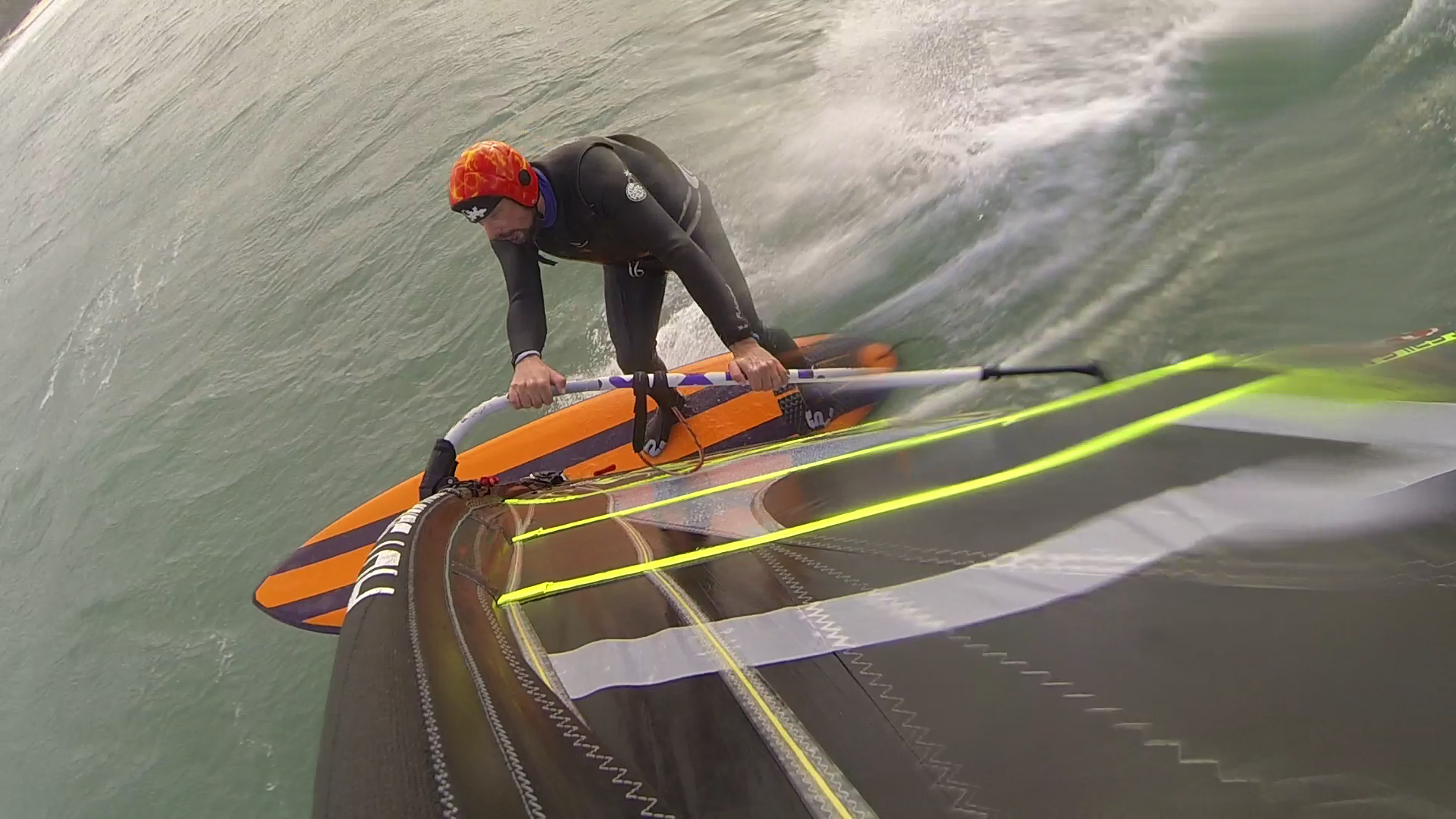
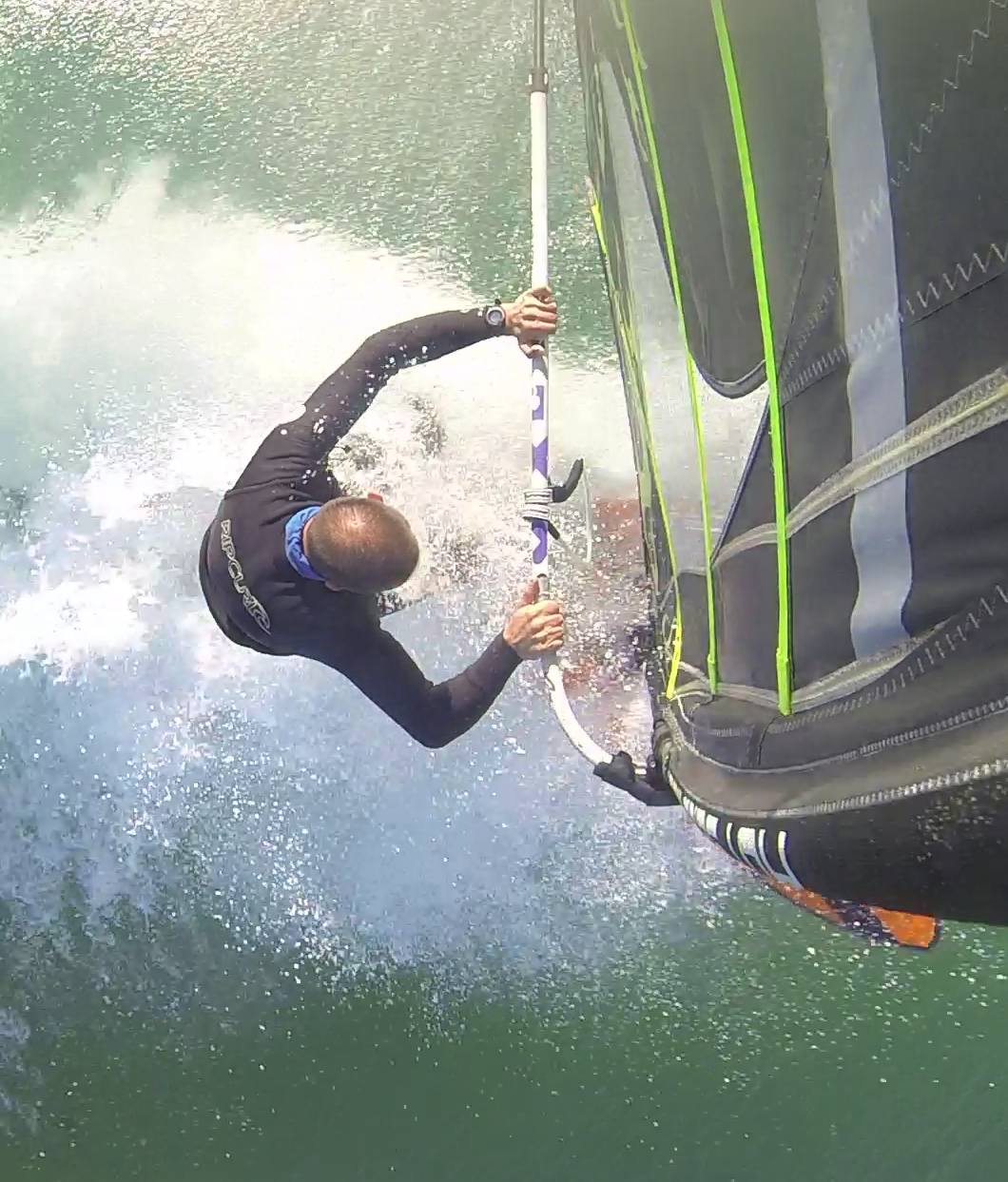

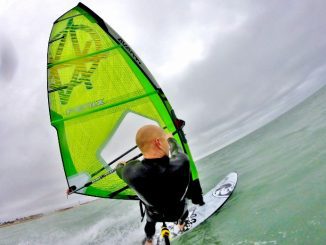
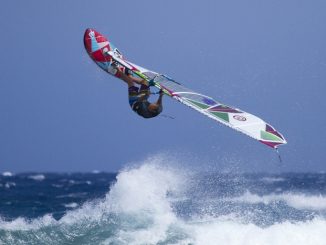
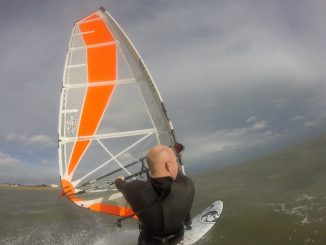
Hi. Very informative article. What size sail seems to be optimal? Thanks
Sorry, I should be more specific. I saw the 4.2 to 5.3 numbers. I’m looking fir the one sail that I can use in as many different conditions as possible. Thanks again.
Hi Thomas. Depends on your size and conditions you’ll be riding in most. I prefer 4.7m-5.2m but some suggest smaller still. Ultimately you want to be using rigs that are small and throw about but still give enough power to actually pick up waves. Hope that helps. Cheers, Tez.